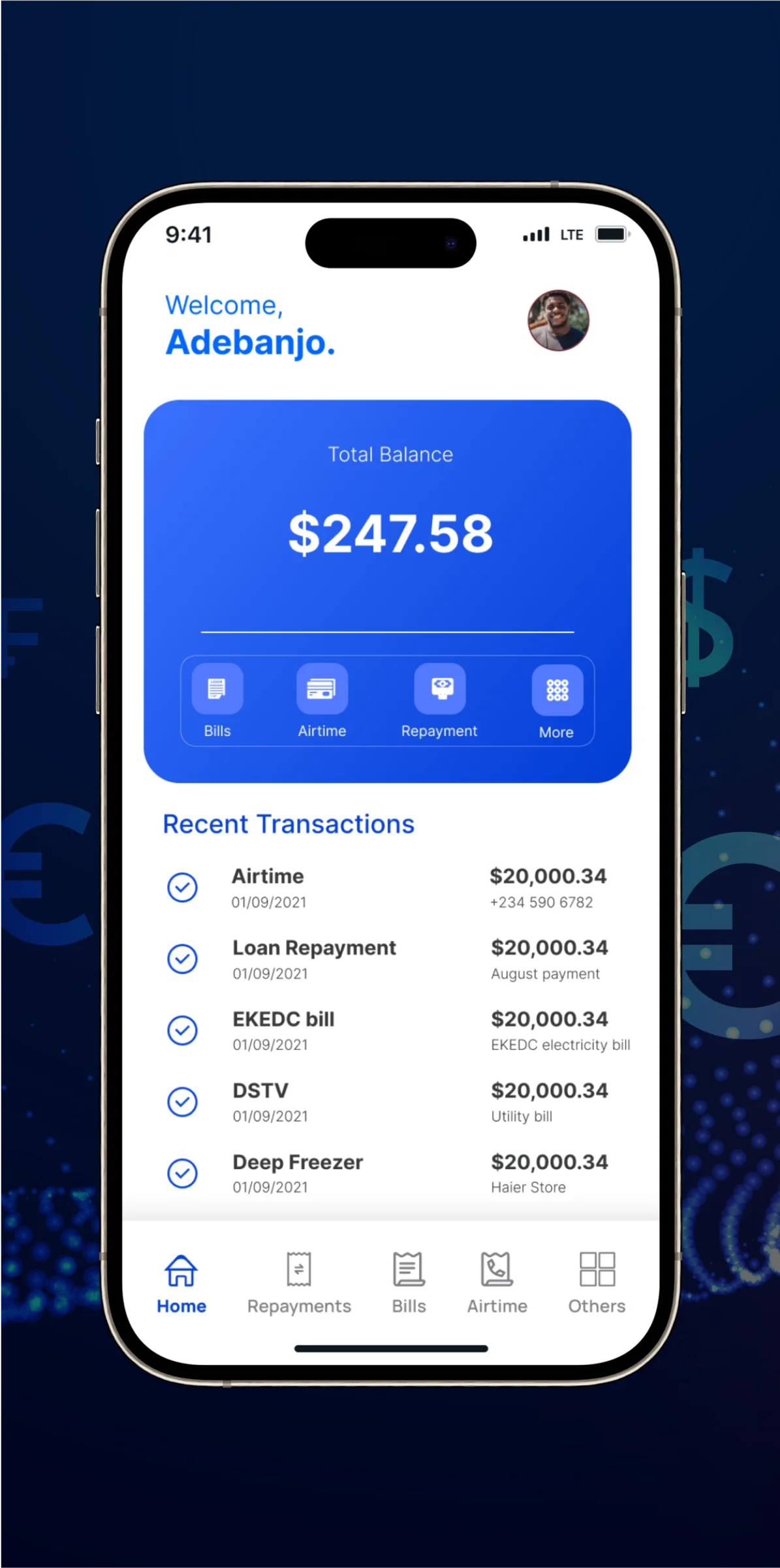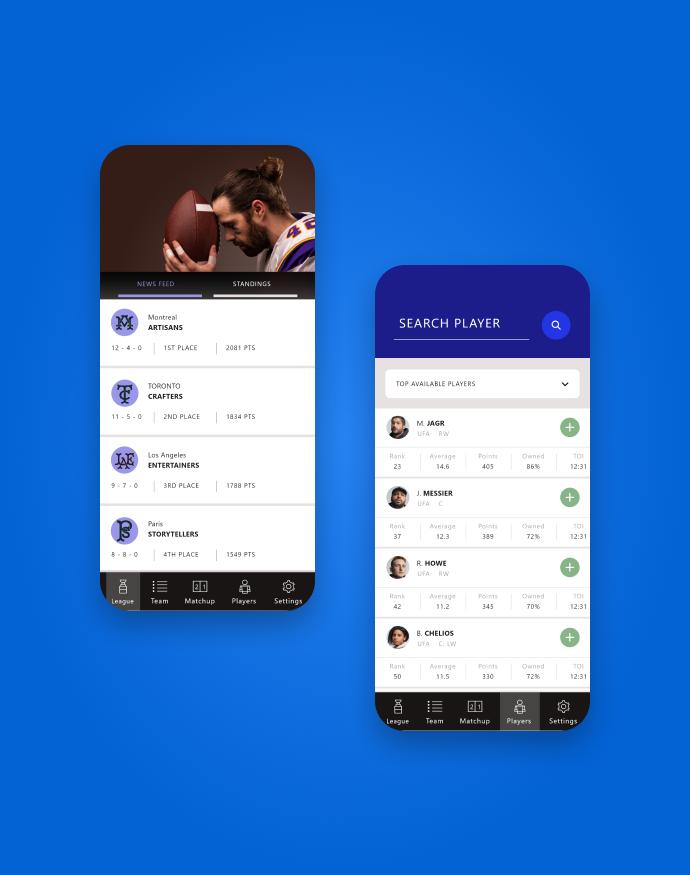
The blockchain revolution is upon us. This phenomenal growth is fueled by the ever-increasing demand for blockchain technology across industries and the public sector. Initially used as the foundation for cryptocurrencies, blockchain has shed its purely financial image and is now transforming supply chains, healthcare systems, government operations, and a multitude of other sectors.
But hold on a minute! Before your business joins the blockchain bandwagon, remember – there’s no one-size-fits-all solution. Just like choosing the right shoes for different activities, there are various types of blockchain, each designed to meet specific needs. This guide will delve into these different types, empowering you to select the perfect fit for your company and unlock the full potential of this transformative technology.
Think of it like choosing shoes. Running shoes wouldn’t be your best bet for a leisurely stroll on the beach, right? Similarly, a public blockchain designed for open participation might not be ideal for a company dealing with highly confidential data. That’s where private blockchains come in, offering a secure and permissioned environment for internal operations like auditing or asset management.
We’ll explore these different blockchain types throughout this guide, helping you choose the one that best suits your company’s unique requirements. By understanding the various options available, you can leverage blockchain to streamline processes, enhance security, and unlock new opportunities for growth.
Before moving on to the types of Blockchain, let us first understand:
What is Blockchain
A blockchain is a ledger of records, called blocks, which are linked using cryptography. Each block contains a cryptographic hash of the previous block, a timestamp, and transaction data. A blockchain is resistant to data tampering by design.
It is “an open, distributed ledger that can record transactions between two parties efficiently and in a verifiable and permanent way.” A blockchain is generally administered as a distributed ledger by a peer-to-peer network that follows a protocol for inter-node communication and verifying new blocks. The data in any particular block cannot be changed retrospectively without affecting all following blocks, which necessitates network majority cooperation.
Market Overview of Blockchain
The global blockchain technology market reached a value of USD 17.46 billion in 2023. Analysts predict a significant increase in the coming years, with a compound annual growth rate (CAGR) of 87.7% projected from 2023 to 2030. This indicates a booming market for blockchain technology as it continues to gain traction across various industries.

Anticipated trends include asset tokenization, the rise of decentralized finance (DeFi), and the increasing prominence of NFTs and digital ownership, all shaping the future of blockchain technology.
Not All Blockchains Are Created Equal: Why Different Types Exist
Blockchain is known for its secure network for transactions, but did you know there’s not just one type? Just like websites can be public or private, blockchains can be too!
Think of public blockchains like a giant online marketplace. Anyone can join, verify transactions (like reviews), and participate. Bitcoin, the famous cryptocurrency, uses a public blockchain.
Now imagine a private network for a company. Only authorized users, like employees or specific partners, can access it. This is similar to a private blockchain used by a bank. Their secure network keeps sensitive financial data accessible only to those they approve.
The type of blockchain a company chooses depends on its needs. Public blockchains offer transparency, while private ones prioritize security and control. This variety ensures there’s a perfect fit for every business!
Types of blockchain
The four types of blockchains are as follows;
1. Private Blockchain
A private blockchain is the most restricted type of blockchain access. The use of this type of blockchain is controlled by an organization, organization chart, or individual person. This type of blockchain gives users an overall view only, and they are unable to see any transaction details.
Private blockchains are typically used by large corporations (such as banks) that handle sensitive data and do not want their competitors to view the information stored in their ledgers. Information stored on private blockchains cannot be viewed without permission from an authorized person within the company.
Private blockchains are much like intranets in the early days of the Internet. They were often used internally (within companies) to provide secure access to information that was not made available via the World Wide Web until years later.
Strengths of Private Blockchain
- Faster time to market – you can use a private blockchain for internal development and integration
- Rapid prototyping – because it is easy to implement, test and deploy, the rapid prototyping cycle is significantly reduced
- No need to worry about consensus – as it is not necessary, developers can focus on building decentralized apps without wasting time
- Replicated updates – as updates are registered to relevant database servers simultaneously across the blockchain network, companies no longer have to worry about discrepancies
Weaknesses of a private blockchain
A private blockchain is a centralized network in most cases so;
- no transaction records in the public
- Not transparent and open to the public
- There is a high risk of collusion among network miners in a private blockchain.
- Lack of trust among the participants
Use Cases of Private Blockchain:
Imagine a high-security vault where only authorized personnel can access sensitive information. That’s the essence of private blockchains. Unlike their public counterparts, private blockchains offer a permissioned environment, ideal for businesses that need to keep data secure and confidential.
Here’s how private blockchains empower businesses:
- Enhanced Internal Processes: Private blockchains streamline internal operations like auditing and voting. Every step is recorded on the blockchain, creating an immutable and transparent record that reduces errors and fosters trust.
- Secure Asset Management: Imagine tracking valuable assets like equipment or intellectual property with complete confidence. Private blockchains allow authorized personnel to monitor asset movement securely, minimizing the risk of loss or unauthorized access.
Think of a private blockchain as a members-only club for your business data. Platforms like Hyperledger Fabric and Corda offer robust solutions for companies seeking a secure and permissioned environment for their sensitive information.
Also read: 51 Essential Blockchain Terms You Should Know
2. Public Blockchain
Public blockchains are permissionless, meaning that anyone with an internet connection can join the network as a node, for example, Bitcoin and Ethereum. Public blockchains are open-source projects, meaning that anyone can submit code changes or additions to their codebase. There is no single person or group in charge of the main code repository or protocol rules.
According to its white paper, a public blockchain may operate under a centralized group of developers, but ultimately, it is controlled by the consensus of its users.
Public blockchains are the most popular form of blockchain due to their availability, ease of use, and open-source nature. Public blockchains are often used for cryptocurrencies based on their decentralized nature.
These cryptocurrencies are usually created through a process called “mining“, where nodes on the network are rewarded new cryptocurrencies for solving complex mathematical equations. However, not all public blockchains are used for cryptocurrencies; some public chains exist to provide alternative transactional functionality to existing financial services, such as smart contracts or programmable money like Ethereum.
Public blockchains are also referred to as “permissionless” because there is no access control mechanism within the protocol itself. Anyone with an internet connection can download and run a node on a public blockchain, which enables them to interact with other nodes
Strengths
- The public blockchain is more scalable
- The public blockchain has stricter checkpoints than the private one
- Public blockchains are more stable than private ones
- Data is more trustworthy
- Capabilities are more than Blockchain technology
- Blockchain can be widely applied
Weaknesses
- There is no privacy in a public blockchain
- You have to pay to use a public blockchain
- Public blockchains are not permission-less
- The network speed of a public blockchain is slow
Use Cases
Public blockchains, with their open and distributed nature, offer a unique set of advantages that extend beyond the well-known use cases of secure voting and trustworthy fundraising. Here are some additional applications that leverage the power of public blockchains:
Supply Chain Tracking: Imagine a world where you can trace the origin of every product you buy, from farm to table. Public blockchains can create a transparent and immutable record of every step in a product’s journey. This not only empowers consumers with informed choices but also helps businesses ensure ethical sourcing and combat counterfeit goods.
- Decentralized Content Creation and Distribution: Public blockchains empower artists, musicians, and content creators to own and distribute their work directly. By cutting out middlemen, creators can capture a larger share of the profits while fostering a closer connection with their audience. Platforms like Steam
and Basic Attention Token (BAT) are pioneering this exciting new way of monetizing content.
3. Consortium Blockchain
In a consortium blockchain network, there are several “nodes” or “members” in the network. Those members set up a peer-to-peer network, which is used to validate transactions and ensure that records of transactions are accurate and permanent. The blockchain also reduces the need for third-party intermediaries since the parties involved in a transaction can verify each other directly through their computers.
The consortium blockchain is an effective solution when a number of related businesses want to work together to keep a shared ledger, but they don’t necessarily trust each other. For example, when multiple companies in a supply chain have to track goods from beginning to end, it may be more efficient to create a shared blockchain instead of setting up independent blockchains for each business involved in the process.
Strengths of Consortium blockchain
- Governance issues are resolved within the consortium
- Faster growth of blockchain technology
- Lower transaction cost
- Incentive alignment with all participants
- Flexibility in executing smart contracts
- Privacy with powerful permissioned consensus
- Resilience to cyber-attacks
Weaknesses of Consortium blockchain
- Decentralized verification methods lead to greater processing and bandwidth overhead while also increasing latency.
- Confidentiality is often compromised.
- Neither transparency nor privacy guarantees the ability to track the ledger back to its origin and detect fraud and errors
- The number of members and their number of ledgers and nodes (a replication factor) needs to be taken into consideration when setting up a consortium blockchain
- Secure inter-ledger communication is challenging to achieve with current protocols
Use Cases of Consortium blockchain:
Public blockchains offer openness, while private blockchains prioritize security. But what if there’s a sweet spot in between? Enter consortium blockchains – permissioned networks ideal for situations where multiple organizations need to collaborate securely without compromising sensitive data. Imagine a consortium as a private club for select businesses, working together on a shared platform. Here’s how consortium blockchains are fostering innovation across industries:
Revolutionizing Supply Chain Management: Imagine a consortium of retailers, manufacturers, and logistics providers working together on a secure blockchain platform. This allows for real-time tracking of goods, improved visibility into inventory levels, and faster resolution of supply chain disruptions. By streamlining communication and data sharing, consortium blockchains can optimize efficiency and reduce costs for all participants.
Transforming Trade Finance: Trade finance can be a complex and paper-heavy process. Consortium blockchains can streamline this process by providing a secure platform for document exchange, trade finance applications, and automated payments. This can significantly reduce transaction times, improve transparency, and minimize the risk of fraud for all involved parties – banks, exporters, and importers.
4. Hybrid Blockchain
A hybrid blockchain can be defined as a combination of permissioned and permissionless blockchains. Hybrid blockchains are primarily open to known entities but still offer some censorship resistance. Also, they permit some degree of anonymity by design.
A hybrid blockchain is a blockchain wherein the consensus mechanism is not proof of work or proof of stake. Currently, most blockchains are based on proof of work (PoW) or proof of stake (PoS), and there are multiple other types of consensus mechanisms. These include:
- Delegated Proof of Stake (DPoS),
- Practical Byzantine Fault Tolerance (PBFT), and others.
A hybrid blockchain can be seen as a combination of two different blockchains: one blockchain with PoW and another blockchain with PoS. The first blockchain is there to protect the network from 51% of attacks, while the second blockchain serves as a governance layer for protocol upgrades and decisions. This way, the miners do not hold too much power over the network’s future direction.
There are different types of Blockchain technology, each with different benefits. When creating a new Blockchain project, it is important to decide which type to use.
Strengths of Hybrid Blockchain
- Offers high transaction throughput
- Enables asset digitization
- Offers fiat currency payments
- Permits private transactions
- Integrated Features of Both Blockchains
- Integration with Software as a Service
Weaknesses of Hybrid Blockchain
- Hybrid Blockchain should provide additional features to the original
- Smart Contracts should be simple enough for daily interaction between individuals
- Hybrids need to offer good anonymity
- Make it user-friendly
Use Cases of Hibrib Blockchain:
Imagine a high-security vault with a digital window. That’s the essence of a hybrid blockchain – a system that cleverly combines the secure, permissioned environment of private blockchains with the transparency and accessibility of public blockchains. This unique blend offers businesses the best of both worlds, making it ideal for scenarios where some data needs maximum security while others benefit from public visibility. Let’s delve into how hybrid blockchains are driving innovation:
Securing Sensitive Data in Supply Chains: Hybrid blockchains can revolutionize supply chain management for companies dealing with sensitive information. For instance, a pharmaceutical company can leverage a hybrid blockchain to track the movement of temperature-controlled drugs. Confidential details like product formulas can be stored securely on the private blockchain, while key logistical data like temperature and location can be shared transparently on the public blockchain. This fosters trust with regulators and consumers while ensuring sensitive information remains protected.
Optimizing Trade Finance with Public Verification: Hybrid blockchains can streamline trade finance processes while maintaining transparency. Letters of credit, invoices, and other trade documents can be securely stored on the private blockchain, accessible only to authorized parties. However, key transaction details like shipment confirmation or payment completion can be hashed and immutably recorded on the public blockchain. This allows for faster verification and reduces the risk of fraud without compromising the confidentiality of sensitive trade agreements.
Conclusion
The blockchain is one of the marvels of modern computing. It has the potential to disrupt many industries and change the way we do business forever. Developers need to create standards on which blockchains can communicate with each other and non-blockchain services. And businesses will need to decide whether they want to invest in blockchain technology or stick with tried-and-true approaches. The challenge for businesses is deciding when and where blockchain technology is best suited to their needs. Because blockchain offers significant advantages over conventional databases, it’s best suited for applications that require:
High security: Blockchain data is encrypted and, therefore, protected against tampering and revision. Some degree of anonymity: For many people, there’s value in keeping their identities private – whether they’re protecting themselves from government intrusions or simply keeping their personal lives separate from their business transactions. A high degree of trust between users: If every member of a network is constantly worried about being cheated, no one will participate or the system will collapse. In many cases, blockchain isn’t a better option than existing technologies. A centralized database might be sufficient for simple identification tasks.
Connect Now To Hire Top Blockchain Developers
Blockchain technology is more than just a buzzword. It has the potential to revolutionize many of the Internet’s most popular services and change how we exchange money, but it’s still in its infancy.
Let Idea Usher design, develop, and implement your blockchain solution. At Idea Usher, we deliver development that is exactly how you want it. Let us take away your pain by developing your idea into a profitable product. Whether you’re looking for an MVP or need to overhaul an existing product, we’ll design something that will win your users’ hearts and minds. Think you don’t understand blockchain? Experience isn’t required because we make sure to thoroughly educate clients about how blockchain works before building their projects. At Idea Usher, we can guide you through the best practices for implementing blockchain into your business. Contact us at [email protected] for a free consultation call today!
FAQs
Here are some frequently asked questions on the types of blockchain;
Q: What are the 4 types of blockchain?
A: The four types of blockchains are public, private, consortium, and hybrid. Public blockchains, like Bitcoin and Ethereum, are open to anyone joining and participating in the network. Private blockchains are restricted to certain individuals or organizations, allowing for more control over access and permissions. Consortium blockchains are operated by a group of organizations, providing a balance between openness and control. Hybrid blockchains combine elements of both public and private blockchains, offering flexibility in terms of accessibility and governance.
Q: What are the 3 most important components of a blockchain?
A: The three most important components of a blockchain are decentralization, immutability, and consensus mechanisms. Decentralization ensures that no single entity has control over the network, enhancing security and reducing the risk of manipulation. Immutability refers to the inability to alter past transactions once they are recorded on the blockchain, ensuring trust and transparency. Consensus mechanisms are protocols that ensure all participants in the network agree on the validity of transactions, facilitating trust and enabling the creation of a single, shared version of truth.
Q: What is the most common type of blockchain?
A: The most common type of blockchain is the public blockchain. Public blockchains, such as Bitcoin and Ethereum, are open and permissionless networks where anyone can participate, transact, and contribute to the network’s security and governance. These blockchains are decentralized, meaning they are not controlled by any single entity, and they offer high levels of transparency and security.
Q: What are the top 3 blockchains and why?
A: The top three blockchains are Bitcoin, Ethereum, and Binance Smart Chain. Bitcoin, the first and most well-known cryptocurrency, is valued for its pioneering role in blockchain technology and its status as a store of value. Ethereum is highly regarded for its smart contract functionality, enabling developers to build decentralized applications (DApps) and issue tokens. Binance Smart Chain has gained popularity for its low transaction fees and compatibility with the Ethereum Virtual Machine (EVM), making it a preferred platform for decentralized finance (DeFi) applications and token launches.









Nandini Purohit